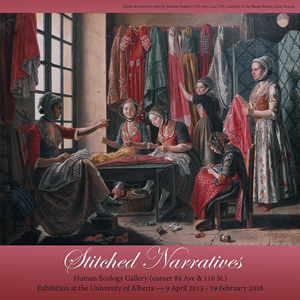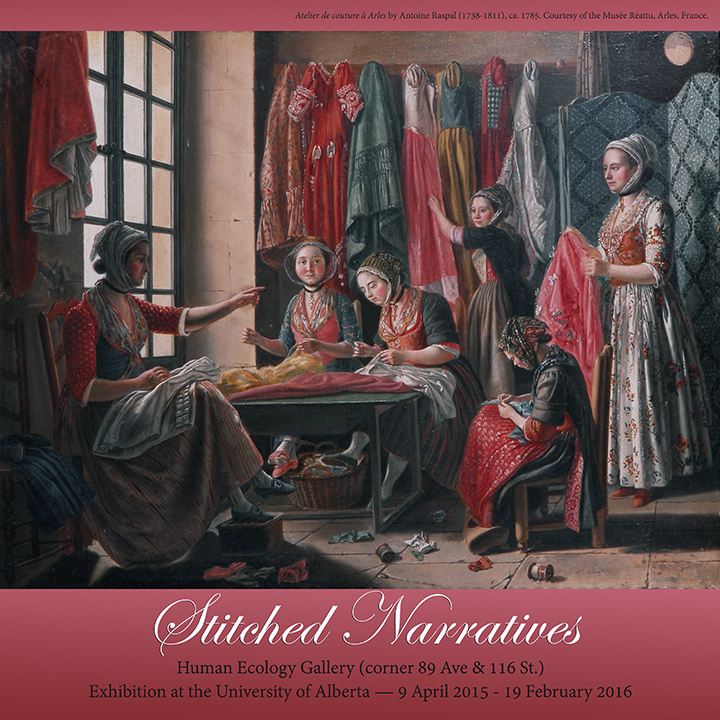

Dr. Anne Bissonnette, Larisa Cheladyn, Stephanie Huolt, Robyn Stobbs
and Sarah Woodyard exhibition co-curators
April 9, 2015, to February 19, 2016
Stays & Corsets | Proper Form | Quilted Compositions | The Language of Folk Dress | Fashion Statements | Gallery Views | Artifacts |
Stitched Narratives
*
The hand stitches a needlewoman applied to cloth reflected her life and expertise. The garments produced were the result of advanced training, and combined the skill of cutting with fitting for a variety of bodies and silhouettes. Consider for a moment: are these stitches an alternative language to the written word?
Eighteenth-century dressmakers, called mantua-makers, undertook rigorous apprenticeships. While men also earned a living with a needle, mantua-making was a specialized trade dominated by women. The dressmaker’s trained eye and her exposure to changing styles encouraged the ever-evolving cycle of fashion. The manipulation of scissors, fabric, and needle performed by the mantua-maker were of personal and global economic importance.
Many of these women’s names have been lost to history because their lives were not recorded with pen and ink. Cloaked in anonymity, their experiences and expertise were stitched in place, as evidence of skilled, paid female-dominated employment.[1] While the mind’s stories can be recorded with words on page, the hand can reflect a different form of knowledge. These stitches communicate complex stories of labour, global economy, and cultural identity “written” with a needle.[2]
Anne Bissonnette, PhD
Larisa Cheladyn
Stephanie Huolt
Robyn Stobbs
Sarah Woodyard
*
[1] Carolyn Dowdell, “The Fruits of Nimble Fingers: Garment Construction and the Working Lives of Eighteenth-Century English Needlewomen” (master’s thesis, University of Alberta, 2010), 73.
[2] Beverly Lemire, Cotton (New York: Berg, 2011), 32.
Cite this page (bibliography):
Bissonnette, Anne, Larisa Cheladyn, Stephanie Huolt, Robyn Stobbs and Sarah Woodyard. “Stitched Narratives” Exhibitions, Clothing and Textiles Collection, Department of Human Ecology, University of Alberta Museums, April 9, 2015. [INSERT URL].
